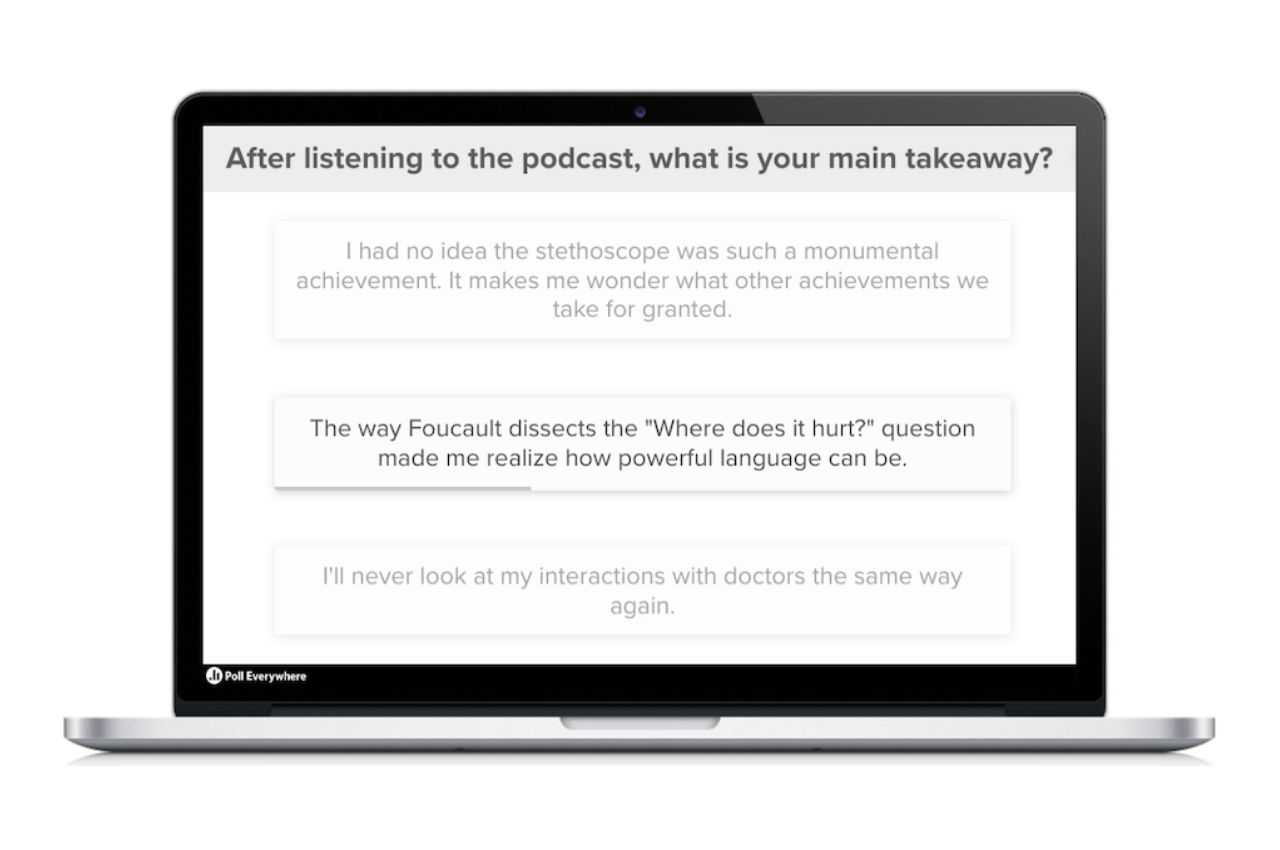How to increase student engagement with the phones in their pockets

There is a massive paradigm shift on college campuses. Digital natives — the generation that grew up with iPods and iPhones in their pockets — don’t see technology as technology.
Digital natives, who are slightly younger than the much-maligned Millennial generation, see technology as simply the way the world works. Leveraging that digital savviness can pay huge dividends in increasing student engagement.
This is Part II of a two-part series on increasing student engagement. Read Part I here.

Start small
If you decide to meet students where they are (on digital media), it can be tempting go all-in. Nicole Kraft, speaking to the New York Times, opts for this approach:
Speaking to students on their terms just makes sense, said Nicole Kraft, a journalism professor at Ohio State who takes attendance via Twitter (She has separate hashtags for each of her three courses). She posts assignments on Slack, an app used in many workplaces. And she holds office hours at 10 p.m. via the video conference site Zoom, “because that is when they have questions.”
But navigating the seemingly infinite and ever-changing universe of apps can be daunting, not to mention time-consuming.
It doesn’t need to be. Dr. Jean Twenge, author of iGen: Why Today’s Super-Connected Kids Are Growing Up Less Rebellious, More Tolerant, Less Happy found through her research that digital natives crave face-to-face interaction and authentic, organic discussion.
That presents an opportunity to start small. Conversations that start on a digital medium, after all, don’t necessarily have to end on a digital medium.
In fact, leveraging the advantages of a digital medium can spark more fruitful offline discussion. The (optional) anonymity of Poll Everywhere leads to more inclusive conversations, making students more likely to speak their minds. Once kindled, that freedom can generate precisely the sort of offline discussion digital natives crave.
Embrace the “testing effect”
The testing effect, which states that tests and quizzes lead to greater recall because it leverages repetition to make learning stick, can be a powerful tool.
Luckily, you don’t need to create an encyclopedia’s worth of tests to have the necessary impact.
Just whip up a short five- to ten-question quiz in Poll Everywhere. As a bonus, if you deploy polling every 10 to 15 minutes or so, you also increase student engagement by simply bringing wandering minds back into the fold.

Assign podcasts as homework
Podcasts as scholarship? You bet. Podcasting is a booming business: about 124 million Americans have listened to a podcast. Of those, about 73 million listen monthly (somewhat obviously, college students comprise a significant portion of that number).
Not everyone is familiar with podcasts, though, and those that are may not know how to listen with the goal of learning and retention in mind.
Cathy Hannabach spells it out:
Just as you have to set aside class time to teach students how to read/watch, take notes on, and engage with the written or visual texts you assign, you should also teach students how to listen to, take notes on, and engage with any podcast episodes you assign. Some students will be completely unfamiliar with podcasts, while others might listen to their favorite shows for fun but have never engaged with them in a classroom setting.
Avoid over-preparing
As James Lang points out in The Chronicle of Higher Education, over-preparation can be exhausting. His solution? Just let go.
The best way to help yourself escape the problem of overpreparation? Let go of the fantasy that you must use every minute of a strictly planned class schedule to introduce, explain, clarify, and cover. Let the homework you’ve assigned — readings, problem sets, videos — do some of the introducing, explaining, clarifying, and covering for you.
Over-preparing can have a significant impact on students, too. If every minute is planned, there’s no time for organic discussion which can be crucial to learning (and which, as we’ve seen, students covet). Lang’s antidote? Start class with a writing exercise, leaving plenty of time to discuss the answers.
Poll Everywhere Q&A was made for this sort of thing, and provides a ton of flexibility. One popular approach: leave a Q&A open at the start of every class. Keep the question a bit vague, letting topics arise organically. This is the Q&A’s specialty, since students can upvote other responses, so that the most engaging rise to the top. Once the class has landed on a topic, you have your discussion points.
You can also get precise with the question. After a few minutes, it will be obvious at a glance which aspect of the material they latched onto, and which key concepts they might’ve missed.

Rediscovering the joy of teaching
Subtle shifts in thinking can have an outsized impact on our workdays. At Edutopia, Shane Safir outlines eight simple ways to reconnect with the joy of teaching. My favorites:
Invite students or colleagues to share their favorite song or artist on a rotating basis. Music releases positive neurotransmitters, calms the brain’s high-alert settings, and can build cultural proficiency as community members share their musical interests.
To capitalize on those good vibes, turn the music of the day into a conversation by asking students to share their thoughts on the song as it’s playing.
Micro‐affirmations can take many forms, such as offering a hug to someone experiencing a setback, giving a colleague some positive feedback, or facilitating an appreciations ritual that invites people to publicly celebrate one another.
Public celebration sounds like the perfect opportunity for an emoji word cloud. Ready to get started? Read Part I of this two-part series, or create your own conversation starter with a free Poll Everywhere account.
Get started